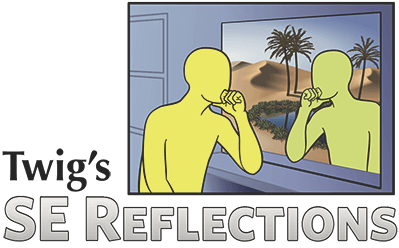Summary: As SEP’s we have a desire to consistently reinforce empowerment, autonomy and self-direction to the extent possible and intelligible. This makes it so we look to maintain a certain economy of feedback that favors client discovery and limits practitioner intervention. [This fits closely with the Intervention : Resiliency ratio].
A good example of this would be the scaling of Feedback that might go along with calling attention to the emergence of an involuntary expression like rocking.
When a client starts to rock, and we deem it significant, important and timely to have them notice it – say because it denotes an attempt at gentle self-soothing and a liberation from excessive “holding” we have various options on how we call attention to it.
From less to more our Feedback might be:
- A simple “uh huh” placed in a timely way that denotes positivity in that something just started to happen that is worth paying attention to. If the pacing of this is accurate enough a client might notice that the new thing is that they’re rocking and that your reflection on it is an encouragement to let it happen and pay attention to it. [This is of the most subtle options and is thus the least intervention, generally requiring the greatest degree of resliency and free attention for the client to “get the hint”.]
- Or we might say “And the rocking…”. This is a type of “stitching phrase” with the word “and” put at the beginning to connects the last thing of permission to this thing of permission indicating that the client should bring their attention to the rocking and allow it to happen.
- Or “And then there’s the rocking, if you like you can let that happen.” This is just that much more explicit and also that much more “direct” though it maintains the focus on choice for the client to pay attention to it and permit it or not.
- Or “And if you notice a little bit of rocking let me ask you to go ahead and let that happen.” This is more directive still.
- And finally, “There’s some rocking happening. I’d like you to feel that and let that happen.” Which is very directive indeed and hardly the client “discovering” their experience, though it may be an appropriate intervention to make sure that the rocking is “caught” and incorporated rather than remaining below the threshold of awareness.
In these things things there’s a trick of scale: how directive, how invitational, how sideways? There is certainly room for personal style of the practitioner here but we can keep this in mind throughout: the more a client discovers, investigates and incorporates their experience with the least amount of direction from us the more likely they are to be successful at attending to their experience when we are nowhere to be found – which of course will be the vast majority of their lives to come.
It’s important to realize there’s a range of Feedback available. It’s not a one size fits all and there’s a direction or ideal to the “empowerment” we offer clients by becoming ever more subtle and non-directive in our interventions as they become ever more capable of “catching” their experience with less and less reflection from us. You might be surprised to find just how well a simple phrase like “and the rocking…” works for someone who has already discovered the value of feeling themselves. Try it out, see what happens…

